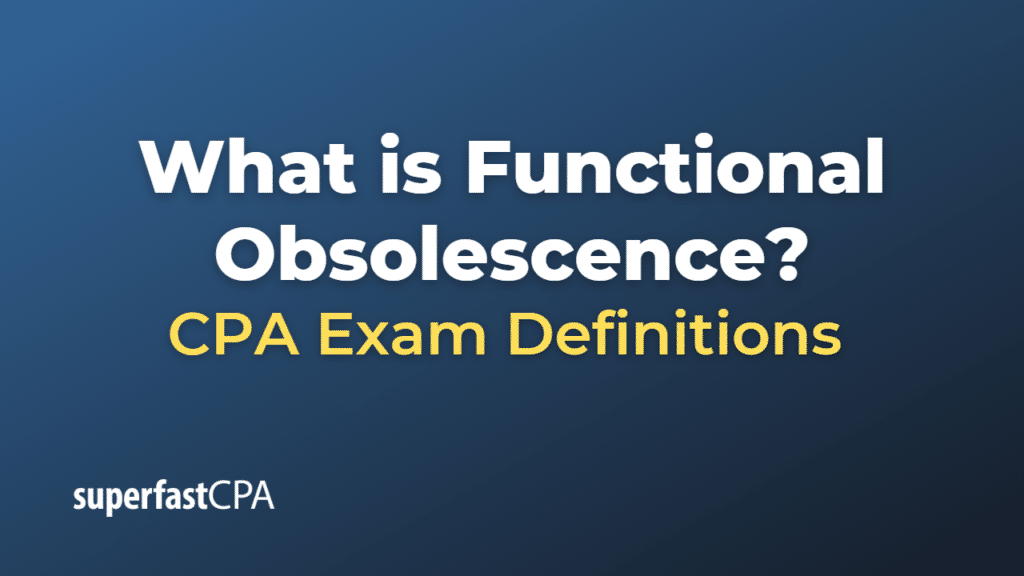Functional Obsolescence
Functional obsolescence refers to a reduction in the usefulness or desirability of an object because of an outdated design feature, not because of physical deterioration. It’s often used in real estate or property valuation but can also apply to other assets like machinery or equipment.
In real estate, functional obsolescence can occur when a property’s layout, design, or other features become less desirable compared to newer properties due to changes in design standards or market preferences. For example, a house with a single bathroom may suffer from functional obsolescence because most buyers prefer homes with multiple bathrooms.
Functional obsolescence can also be caused by factors external to the property, such as changes in zoning laws or building codes that render certain features or layouts non-compliant.
In terms of machinery or equipment, functional obsolescence can occur when a piece of machinery or equipment becomes outdated and less efficient compared to newer models. For example, an older model of a computer may become functionally obsolete because it doesn’t have the processing power to run newer software effectively.
It’s important to note that functional obsolescence can negatively affect the value of an asset. Therefore, it’s a factor that needs to be considered when determining depreciation for accounting purposes or when valuing an asset for sale.
Example of Functional Obsolescence
Imagine a large, older home in a neighborhood that has primarily been redeveloped with modern, energy-efficient homes. This older home has several characteristics that, while common when it was built, are now considered out of date.
For instance, the house may have a layout with many small, separate rooms, while the market trend is now favoring open-plan designs. The home might also lack modern amenities that are now standard in new homes, like an en-suite master bathroom, a home office, or a large, modern kitchen. Additionally, it may lack energy-efficient features that new homes have, like double-paned windows or high-efficiency heating and cooling systems.
All these factors result in the older home having functional obsolescence. Even though the home may be in perfect physical condition, its outdated design and lack of modern features decrease its desirability and value in the current market. The cost of renovations to update the home’s layout or add missing features would need to be taken into account when pricing the home for sale.
Similarly, in a business setting, a company may have a piece of machinery that, while still operational, is less efficient or slower than newer models. This could result in higher production costs or longer production times compared to competitors who have updated their equipment. In this case, the machine could be considered functionally obsolete, and the company would need to consider the cost and benefit of replacing it with a newer model.













